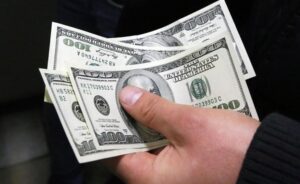
The U.S. dollar is stable against the euro and the yen in trading on Friday, strengthening against the pound sterling.
A day earlier, the dollar fell in price against the world’s major currencies after the publication of the minutes of the Federal Reserve (Fed) meeting in November, which showed that the overwhelming majority of the U.S. central bank sees the need to slow the pace of rate hikes in the near future.
The ICE index showing the dollar’s performance against six currencies (euro, Swiss franc, yen, Canadian dollar, pound sterling and Swedish krone) lost 0.17% on Friday, while the broader WSJ Dollar Index was steady.
The euro/dollar pair is trading at $1.0411 as of 8:10 a.m., up from $1.0413 at the close of the previous session.
The dollar is trading at 138.66 yen against 138.64 yen the day before. The pound fell to $1.2099 from $1.2117.
On Thursday, the dollar fell 0.2% against the euro, 0.7% against the yen and 0.5% against the pound.
“Some of the Fed leaders observed that monetary policy had reached a state in which it was sufficiently restrictive to meet FOMC goals and it would be appropriate to slow rate hikes. The vast majority of meeting participants felt that a slowdown in the pace of the hike would probably be appropriate soon,” the minutes of the Nov. 1-2 Fed meeting noted.
Some of the U.S. central bank leaders, meanwhile, believed that the Fed would have to raise the rate higher than previously planned in order to meet its goal of easing inflation.
They indicated that the rate “will have to reach a somewhat higher level than previously expected,” given the lack of sufficient signals of easing inflation in the U.S. at the moment, as well as the continuing imbalance of supply and demand in the economy.
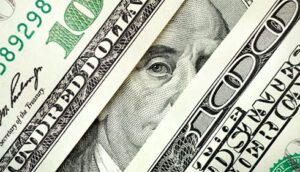
The U.S. dollar is getting cheaper against the euro, is stable against the British pound and rises against the Japanese yen in trading on Wednesday morning.
The ICE-calculated index showing the dollar’s dynamics against six currencies (euro, Swiss franc, yen, Canadian dollar, pound sterling and Swedish krona) is losing 0.13%, while the broader WSJ Dollar is down 0.03%.
The focus for traders this week is the minutes of the Federal Reserve’s November 1-2 meeting, at which the U.S. central bank raised its benchmark interest rate by 75 basis points (bps) and hinted at the possibility of a slowdown in its rate hike.
The minutes of the meeting will be published on Wednesday at 9 p.m. The experts expect the report to show that the Fed’s leaders reached a consensus on the need to slow the rate hike, Bloomberg wrote. However, there’s no consensus among them as to what interest rate cap will start to slow economic activity and lower the rate of inflation.
The euro/dollar pair is trading at $1.0329 as of 8:30 Moscow time, down from $1.0306 at the close of the previous session.
The dollar rose to 141.34 yen in trading against 141.22 yen on Tuesday.
The pound exchange rate was stable at the level of $1.1887 at the close of the previous session.
Meanwhile, the Chinese yuan was falling 0.19% against the dollar to settle at 7.1541 yuan per $1 as of 8:40 Moscow time. Investors are worried about new lockdowns in major Chinese cities because of a new outbreak of the coronavirus in the country which may trigger a slowdown in economic growth.

The US dollar is getting cheaper against the euro, the yen and the pound sterling in trading on Tuesday after the previous session’s strengthening following another Federal Reserve (Fed) statement.
This week, traders will focus on the Federal Reserve’s minutes of November 1-2 meeting at which the U.S. central bank raised its benchmark interest rate by 75 basis points (bps) and hinted at a possible slowdown in the rate hike.
The minutes of the meeting will be released Wednesday at 9 p.m. ET.
On Monday, Federal Reserve Bank (FRB) presidents Loretta Mester and Mary Daly of Cleveland and San Francisco signaled that the U.S. central bank would slow the pace of prime rate hikes next month, while stressing that the need for further policy tightening remains.
“I believe we can slow down the rate hike at the next meeting, I don’t see a problem with that,” Mester told CNBC. – However, I don’t think we’re close to pausing.”
For her part, Daley said the Fed should be mindful of the time lag between Fed decisions and their impact on the real economy. At the same time, she reiterated that she sees the need to raise the rate to at least 5%.
The ICE-calculated index showing the dollar’s performance against six currencies (euro, Swiss franc, yen, Canadian dollar, pound sterling and Swedish krona) lost 0.18% on Tuesday, while the broader WSJ Dollar lost 0.17%.
The euro/dollar pair is trading at $1.0259 as of 8:15 a.m., up from $1.0243 at the close of the previous session.
The dollar traded down to 141.78 yen from 142.14 yen on Monday.
The pound rate rose to $1.1851 compared to $1.1824 the day before.
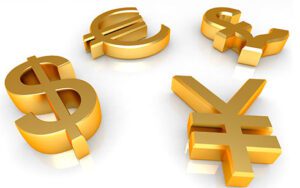
The dollar is rising strongly against the euro and the pound sterling and moderately more expensive against the yen, thanks to increased demand for protective assets and hawkish statements from Fed chiefs.
The ICE-calculated index showing the dynamics of the US dollar against six currencies (euro, Swiss franc, yen, Canadian dollar, pound sterling and Swedish krona) is up 0.4%, while the broader WSJ Dollar Index is up 0.34%.
The euro/dollar pair is trading at $1.0284 by 7:35 a.m., versus $1.0326 at the close of last Friday’s session; the euro is losing about 0.4%.
The dollar/yen is up 0.1% at 140.47 yen, up from 140.39 yen at the end of last session.
The pound is getting cheaper by 0.5% and is trading at $1.1829 versus $1.1888 the day before.
Federal Reserve Bank of St. Louis Governor James Ballard said last week that the Fed would have to keep raising the benchmark interest rate. At the same time, the charts accompanying his remarks showed that its level could reach 5-7% per year.
Meanwhile, Boston Fed Chair Susan Collins said Friday that the Fed could consider various options for changing the interest rate at its December meeting, including a 75 basis point hike.
The Fed has raised the rate by 75 bps at its last four meetings, and now analysts and economists generally expect the next hike to be 50 bps.
The Fed will hold its next meeting on December 13-14.
The dollar is also supported by demand for safe haven assets amid fears over the spread of the coronavirus in China and actions by authorities to contain the pandemic, writes Trading Economics.
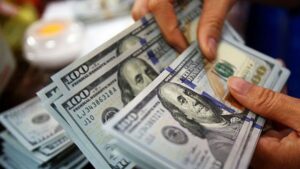
The dollar rises moderately against the euro and the pound sterling, but weakly depreciates against the yen as market participants assess statements by members of the U.S. Federal Reserve (Fed).
The ICE-calculated index showing the U.S. dollar against six currencies (euro, Swiss franc, yen, Canadian dollar, pound sterling and the Swedish krona) is up 0.16%, while the broader WSJ Dollar Index is up 0.14%.
The Fed will raise the benchmark interest rate by at least another 1 percentage point or more, and only after that could it take a pause, Mary Daley, head of the Federal Reserve Bank (FRB) of San Francisco, said the night before. A rate range of 4.75-5.25 percent “is a reasonable level to consider,” she told CNBC.
Kansas City Fed Governor Esther George also said the Fed should not stop raising rates too soon, and added that the goal of achieving a “soft landing” could be difficult.
The Fed has raised the benchmark interest rate by 3.75 percentage points (pp) in less than a year, increasing it by 0.75 pp at once in the last four meetings. The rate is currently at 3.75-4% per annum, and the market expects it to rise by 50 bps in December.
By 8:52 Moscow time the euro/dollar pair is trading at $1.0378 versus $1.0396 at the close of Wednesday’s session and the euro is losing about 0.2%.
The dollar/yen exchange rate is down 0.1% at 139.39 yen, down from 139.54 yen at the end of last session.
The pound is getting cheaper by 0.2% and trades at $1.1895 against $1.1915 the day before.
On Thursday the market is waiting for the final data on October inflation in the euro area and data on the construction of new houses in the USA.
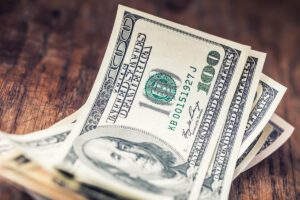
The dollar is moderately depreciating against the euro and appreciating against the yen on Wednesday morning as investors assess geopolitical risks and U.S. inflation data.
The ICE-calculated index, which shows the U.S. dollar’s performance against six currencies (euro, Swiss franc, yen, Canadian dollar, pound sterling and Swedish krona), is up less than 0.1%, as is the broader WSJ Dollar Index.
The day before, the dollar index had fallen to a three-month low on further signals of slowing U.S. inflation.
As it became known on Tuesday, producer prices in the United States (PPI) rose 8 percent year-over-year in October and 0.2 percent against September. Analysts polled by Trading Economics forecasted an average increase of 8.3% for the former index and 0.4% for the latter.
Meanwhile, Rafael Bostic, head of the Federal Reserve Bank (FRB) in Atlanta, expressed the view that the Fed should continue to raise interest rates until there are signs of widespread easing in inflation. “We haven’t seen that yet, so I believe we will need new rate hikes,” Bostick wrote. He added, however, that he sees “glimmers of hope” in the past three months, but prices are falling mostly for goods, not services.
The currency market is also reacting to news of a rocket explosion in Poland, which killed two people. A number of media outlets wrote that the missile could have come from Russian territory.
However, Polish President Andrzej Duda said the government could not yet confirm who fired the missile, and U.S. President Joe Biden said it was unlikely that it came from Russian territory.
The Russian Defense Ministry denied that the rockets were Russian, saying that the military had not struck any targets near the Ukrainian-Polish border.
The euro/dollar pair was trading at $1.0370 by 7:52 a.m., versus $1.0350 at the close of Tuesday’s session, with the euro strengthening 0.2%.
The dollar/yen is up 0.4% at 139.82 yen, up from 139.31 yen at the end of last session.
The pound is stable and trading at $1.1865.